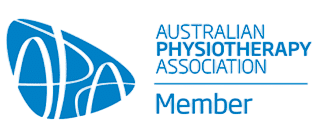What is Patellofemoral pain syndrome (PFPS):
PFPS is a category of pain in the areas of the patella (kneecap), and/or femur (thigh bone).
Relevant anatomy:
The kneecap is attached to the quadriceps (a large group of muscles at the front of your thighs). The quadriceps are responsible for straightening your knee along with standing, walking and essentially any functional movement of the legs. Due to its attachment, the kneecap moves with the quadriceps as you bend and straighten your knee.
Symptoms:
PFPS pain is typically felt in the front of the knee near or under the kneecap, although sometimes the pain can be felt deep inside, at the sides or the back of the knee. Typically pain arises with no obvious reason or injury, and may limit your ability to squat, kneel, use the stairs or walk.
Cause:
People with PFPS usually have a number of causative factors, such as poor kneecap alignment, muscular imbalance, bony abnormalities, overuse and overload of the knee joint and tendons and trauma to the knee. One of the more common causes is an abnormal alignment of the kneecap. Typically poor alignment may be due to an increased upwards and outwards pull of the kneecap caused by overactivity and tightness of the outer quadriceps, and weakness of the inner quadriceps. Poor loading of the knee joint may be caused by dysfunction of your glute muscles (muscles in your bottom), or dysfunction of the foot and ankle.
Treatment:
Treatment will involve finding out the specific causes of your PFPS, and addressing them through methods such as manual therapy, strength and functional exercises to regain optimal function of the knee joint, modalities, and education about your specific condition. The prognosis of PFPS will vary highly with individual presentation, but consistent therapy and individualised exercise has shown to be the most effective treatment method.
My Physio My Health
Trust our team of physiotherapists to help you recover faster and improve your quality of life.

 WISHING EVERYONE A HAPPY NEW YEAR! WE'VE RETURNED TO OUR REGULAR OPENING HOURS
WISHING EVERYONE A HAPPY NEW YEAR! WE'VE RETURNED TO OUR REGULAR OPENING HOURS




